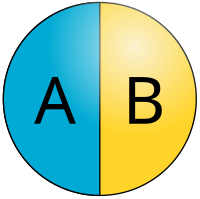
Photo from wikipedia
HYPOTHESIS The controllable transfer of colloidal particles across liquid-liquid interfaces has attracted great interests in synthesis of new materials and stabilization of emulsions. Can we find new ways of controlled… Click to show full abstract
HYPOTHESIS The controllable transfer of colloidal particles across liquid-liquid interfaces has attracted great interests in synthesis of new materials and stabilization of emulsions. Can we find new ways of controlled transferring particles across liquid-liquid interface with reversible transfer directions and size manipulation? EXPERIMENTS A technique of bidirectional transfer of colloidal particles in an aqueous two-phase system (ATPS) under electric pulse was developed. The influences of electric pulse, ATPS composition, surfactant concentration, ionic strength and particle size on the particle transfer were investigated systematically. FINDINGS Under electric pulses, particles overcome the energy barrier at the liquid-liquid interface and transfer into the other phase. The action of particle transfer is determined by the voltage of electric pulse, and the transfer direction is reversible by exchanging the direction of electric pulse. The ATPS composition, surfactant concentration, ionic strength and particle size affect the particle transfer by changing the free energy of particle detachment. With this method, the targeted transfer of particles by size can be realized by controlling the strength of electric pulse. The proposed method provides a promising technique for transfer of particles across liquid-liquid interface with advantages of fast response and precise control.
Journal Title: Journal of colloid and interface science
Year Published: 2019
Link to full text (if available)
Share on Social Media: Sign Up to like & get
recommendations!